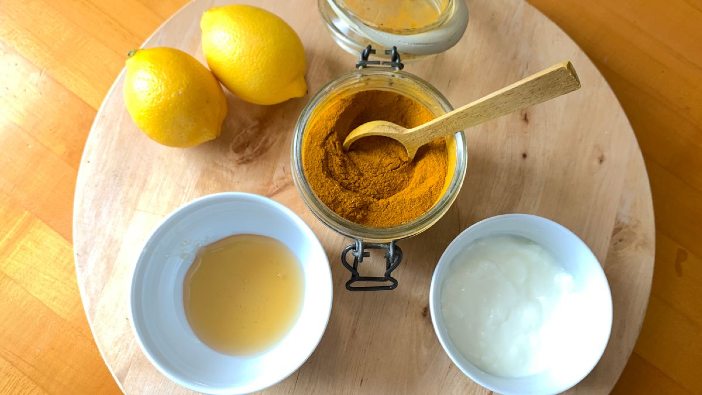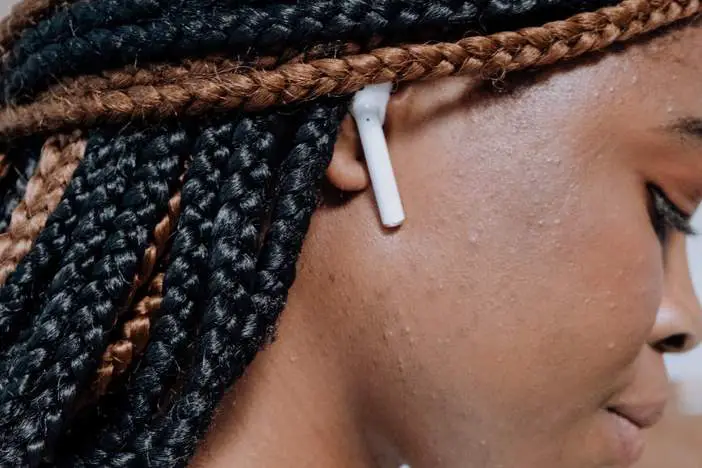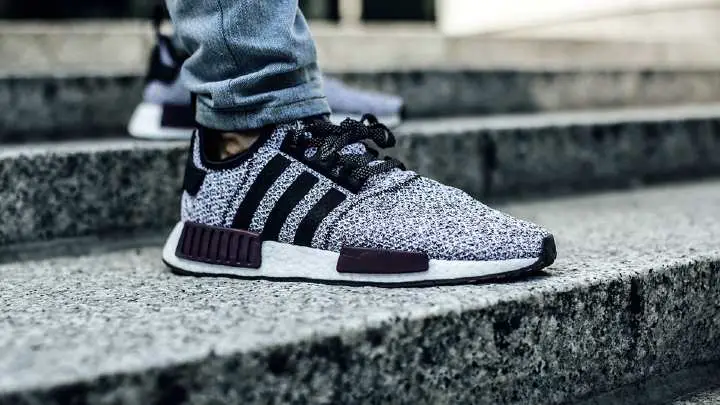When you experience acne breakouts, what goes through your mind is not the red dot sitting pretty on your face but the aftermath. Will it leave a scar? Suddenly, how to remove the acne scar becomes imperative.
Thank goodness some remedies and treatments would restore your skin to as good as new.
Acne scars are a type of hyperpigmentation caused by the inflammation of acne breakouts in the skin. The inflammation occurs when the skin loses collagen while healing. The restoration becomes stunted, thereby turning to scars.
You can treat your acne scars with spot treatments with active ingredients, home remedies, or in-office cosmetic treatments. However, your choice of treatment depends on what type of scars you have.
To find the perfect solution to remove an acne scar, you need a complete understanding and guide to help you. This article will walk you through how to remove an acne scar on your skin.
How to Remove Acne Scar

1. Retinoids
Retinoids are a vitamin A derivative, which retinol also falls under. The component is known for treating skin issues. You can use retinoids to clear your skin and reduce all forms of hyperpigmentation and discoloration.
Furthermore, they are common products prescribed by dermatologists for severe acne treatment and skin care.
Additionally, the component helps with cell rejuvenation and regeneration. Retinoids come in several forms including OTC (over-the-counter) spot treatments and cosmetic products that help in restoring your natural complexion.
According to board-certified dermatologist, Kara Shah, M.D., Ph.D., “Regular use of topical retinoid products like tazarotene, tretinoin, or adapalene can help to prevent and also reduce the appearance of acne scars.”
The retinoid forms suit all types of acne scars and would help your skin get back its texture.
SEE: These Are the Best Blackheads Removal Methods for You
2. AHAs
You will find one or two Alpha hydroxyl Acids (AHAs) skincare products that treat uneven complexion and clogged pores. That is because the components lighten the skin, giving you a clear skin tone.
You should look for AHAs like lactic acid and salicylic acid in your products if you want to clear your acne scars.
Salicylic acid
Salicylic acid can be used to treat acne scars. The AHA component unclogs skin pores, reduces skin redness and swelling, and brightens and exfoliates your skin.
You will find salicylic acid in topical creams, chemical exfoliators, and other skincare products. In addition, the acid is non-abrasive; it can be added to your daily skincare routine. This type of treatment is also suitable for all types of acne scars.
Lactic acid
Lactic acid, like salicylic acid, is an AHA component that improves skin complexion. It also reduces pigmentation and lightens the skin with acne scars.
You can find lactic in skincare products including moisturizers, exfoliators, toners, serums, peels, and spot treatments. Furthermore, it treats all types of acne scars.
3. Chemical Peels
Chemical peels are designed to provide a chemical solution to your acne-scar-riddled skin. It involves using potent or strong chemicals or acids to remove acne scars in layers. It starts with the surface layer, then seeps deep into the skin with each use.
You can use chemical peels at home or seek in-office treatment because of the level of concentration, especially for sudden changes in your skin. It is most suited for deep scars but can be used for all types of scars.
SEE: How To Remove Blackheads From Your Inner Thighs
4. Microneedling
This is a treatment with a needle-fixed roller or pen-like device with a handle to puncture the skin. The needle pinches the skin out, and as it heals, new skin replaces the treated spots.
Although the needle roller pinches the skin, it does not go into the skin like a needle shot. This treatment also improves collagen production in the skin.
However, the treatment takes time to show results. You might take up to nine months to see a full positive result. Nevertheless, the treatment is safe to use. It is most suitable for icepick acne scars and roller scars.
5. Laser Treatment
Laser resurfacing is a treatment that uses a laser to remove the surface layer of the skin. This treatment is also an in-office treatment that shows results as your skin heals.
In addition, you can use it to lighten your skin’s redness and tone. However, the duration of the treatment requires extra treatment and minimal exposure to external agents. Furthermore, your skin would be delicate during this period. Therefore, it needs to be covered at all times.
6. Dermabrasion
This is another in-office treatment, which involves using a high-speed rotating wire brush or something close to resurface your skin. This reduces the depth of the scar with each resurfacing due to new skin replacing the old one.
Although this procedure works, your skin will not heal for a few weeks. The time of healing could be between ten days to four weeks. The treatment is suited for severe scarring on the face
7. Filler
Fillers also help to remove acne scars. The fillers can be made with collagen, hyaluronic acid, or body fat to plump your skin and smoothen out the scars. The fillers are injected into the skin and gradually, the skin gets back its smooth complexion.
Treatment may last from half a year to two depending on your skincare routine. The lasting treatment suits treatment for general skin discoloration.
8. Natural Remedies

Sometimes what it takes to remove acne scars is a remedy sitting somewhere in your kitchen. Simple home remedies you can use to remove acne scars include:
Coconut oil
Coconut oil is the holy grail of skin and hair care. It has several benefits that would help you. The oil contains anti-inflammatory and antibacterial components that help in soothing the skin.
Additionally, the oil contains antioxidants with vitamins A and K that treat skin pigmentation. You can use the oil as a nighttime treatment for gradual treatment.
Aloe vera
Aloe vera also has antioxidants and antibacterial components that work wonders on skin infections. It reduces not only pimples but also acne scars. Furthermore, it is fast-acting, providing a speedy overturned result. It can be used for all kinds of scars.
Baking soda
Baking soda exfoliates the face and smoothens it. It also balances the skin’s pH level, maintaining silky and soft skin. Asides from this, it removes scars and spots with its bleaching properties.
You can use a baking soda mix every other day, leaving it on your face for about 15 minutes before washing it off with water.
Lemon
Lemon contains vitamin C, which helps in skin complexion lightening and smoothening. You can use the lemon juice alone or mix it with lemon for elevated effect. Get the best of lemon by following this simple step:
- Cut a single lemon in halves
- Squeeze out the juice
- With a cotton pad apply the juice on your face, focusing on your problem areas
- Leave on your face for up to 15 minutes
- Wash off with lukewarm water
Use this home remedy once every two days until you get your desired result.
Turmeric
Turmeric contains anti-inflammatory and antioxidants that treat skin issues. The home remedy is also known to have skin-brightening effects.
You can make a turmeric facemask paste using honey or lemon. Leave the mask on for about 30 minutes before washing off with water.
SEE: Helpful Remedies to Remove Spots on Your Dark Skin
Types of Acne Scars

The acne scar spotted on your face determines what treatment suits you best. Before you remove an acne scar on your face, you have to identify if it is an atrophic or hypertrophic scar.
Atrophic scars
The most common scars in the league, atrophic or depressed scars form when the skin does not produce enough collagen as it heals after an acne breakout. They are known to show beneath the skin, which is why they are called depressed scars. You will mostly find these types of scars on the cheeks.
There are different types of depressed scars like icepick scars, boxcar scars, and rolling scars. Icepick scars are narrow, closely alike to a chickenpox mark. However, they are the hardest to treat due to their deep penetration into the skin.
Meanwhile, boxcar scars are shallow and sharp but are not hard to remove. They are the first to react to treatments on the skin.
On the other hand, rolling scars are irregular. They are usually rounded, but they have a rolling appearance.
Hypertrophic scars
Hypertrophic scars or raised scars are known to be raised on the skin surface. They are caused by excess collagen production during acne healing. You will find these scars on the back and chest area of the body.
Additionally, these scars come in the form of red, pink, or skin-colored scars on the body. However, these spots can darken with exposure to the sun.
Frequently Asked Questions

How long does it take an acne scar to fade?
You can see your acne scars clearing within a few hours to weeks or months. The type of acne scar you have determines how fast your scar heals.
For instance, boxcar scars rapidly clear off because they are shallow. Whereas, icepick scars are known to be difficult. Meanwhile, you would have to exercise patience with your raised acne scars.
Will my acne scar disappear permanently?
Yes, they would. Once you remove an acne scar, it disappears permanently.
Nonetheless, you can experience another breakout in that particular spot which could lead to another scar. You need to use preventive methods and a working routine to maintain your healthy skin.
When should I see a dermatologist for my acne scars?
You should see a dermatologist when your scars are not clearing.
This is usually caused by a medical condition or consistent recurring acne on a particular spot. This, in turn, deepens the discoloration on your face.
Furthermore, for difficult hard-to-remove depressed acne scars, it is best to see a dermatologist for in-office treatment.
Are acne scars life-threatening?
No, they are not. Acne scars are not life-threatening.
However, you might experience excess acne breakouts and what feels like permanent scars due to some medical conditions.
If you are experiencing severe breakouts, it is best to see a professional for a diagnosis.
Conclusion

There is no greater defense like offense. If you do not want to remove your acne scar, you have to care for your skin before it shows. However, some breakouts would take you by surprise and leave you hanging.
When such happens, you need tips and hacks on how to remove acne scar on your face. You can opt for home remedies or use topical treatments that contain active components like retinoids and AHAs.
However, if these treatments do not work, seek the help of in-office treatments to remove the scars. Getting back your smooth and healthy skin is a goal every woman strives for, but you have to work for it with diligence and patience. Rome wasn’t built in a day after all.
Thanks for reading.
Africana fashion provides relevant beauty articles to help improve your skincare goals.






